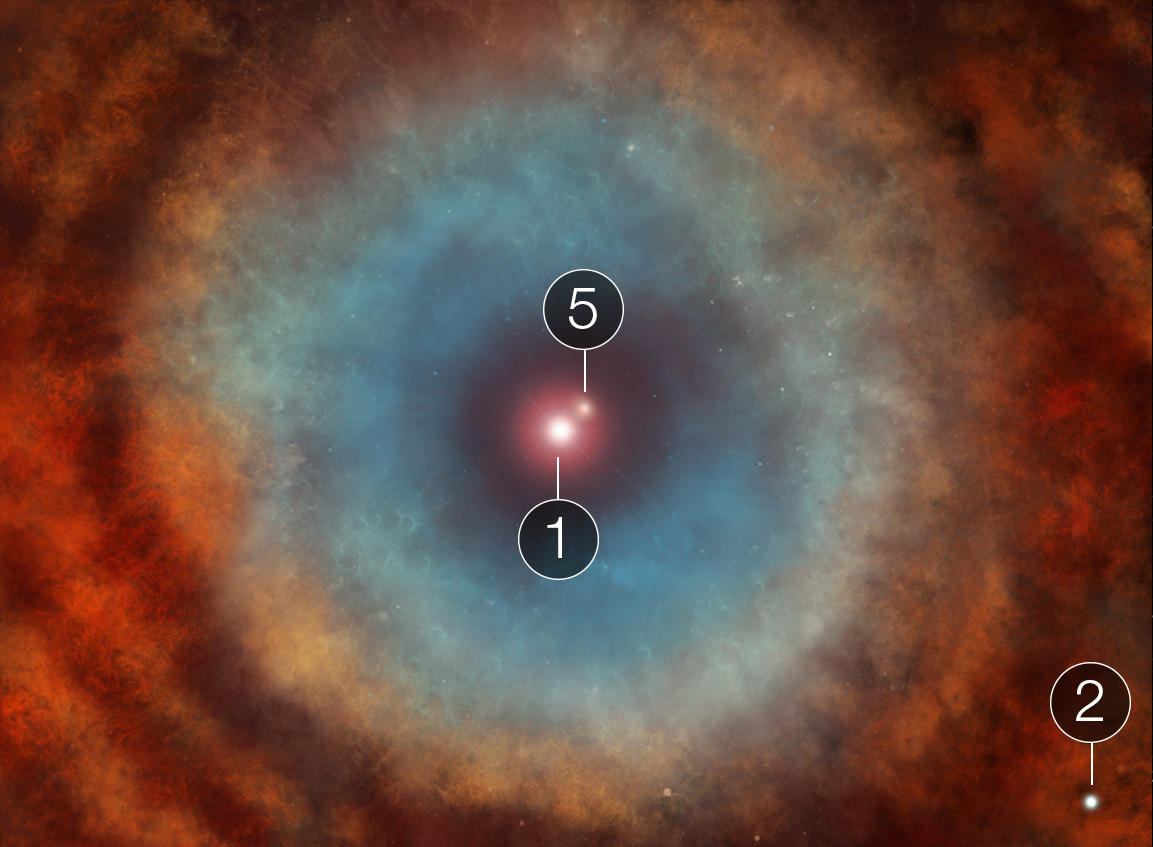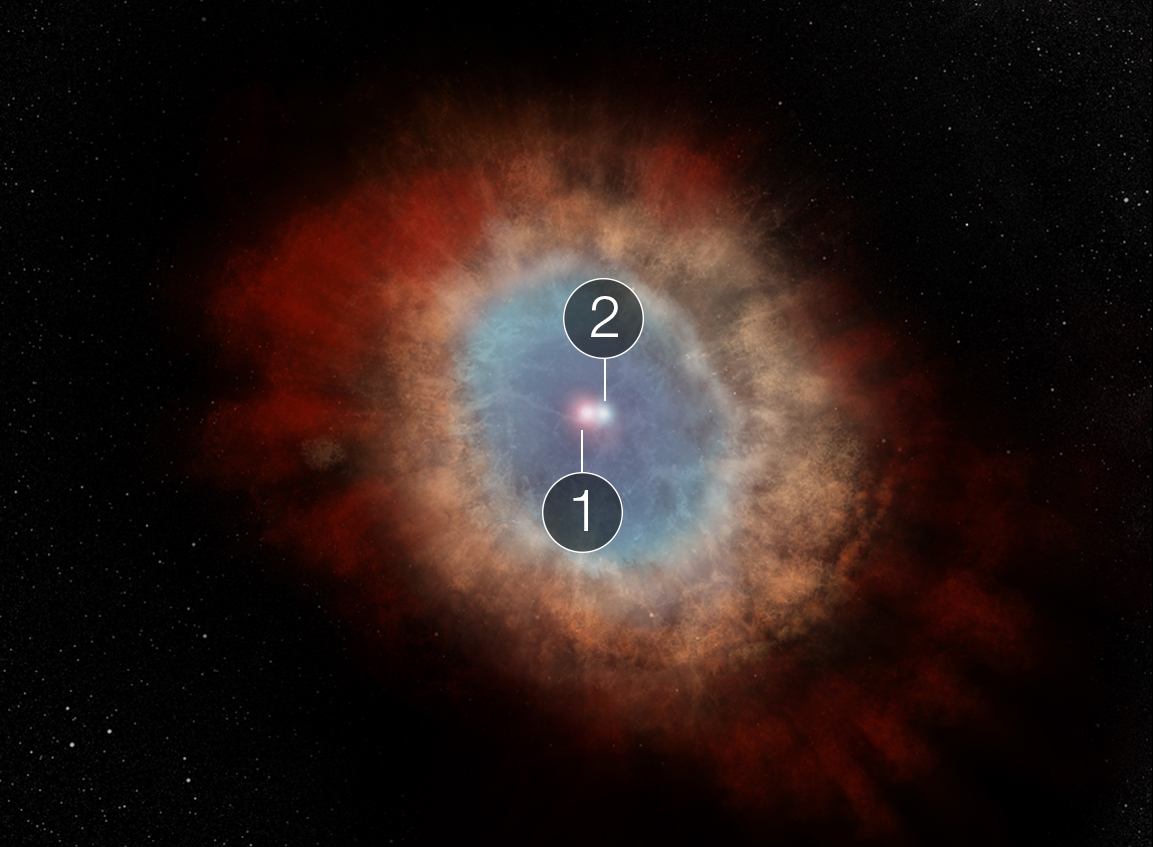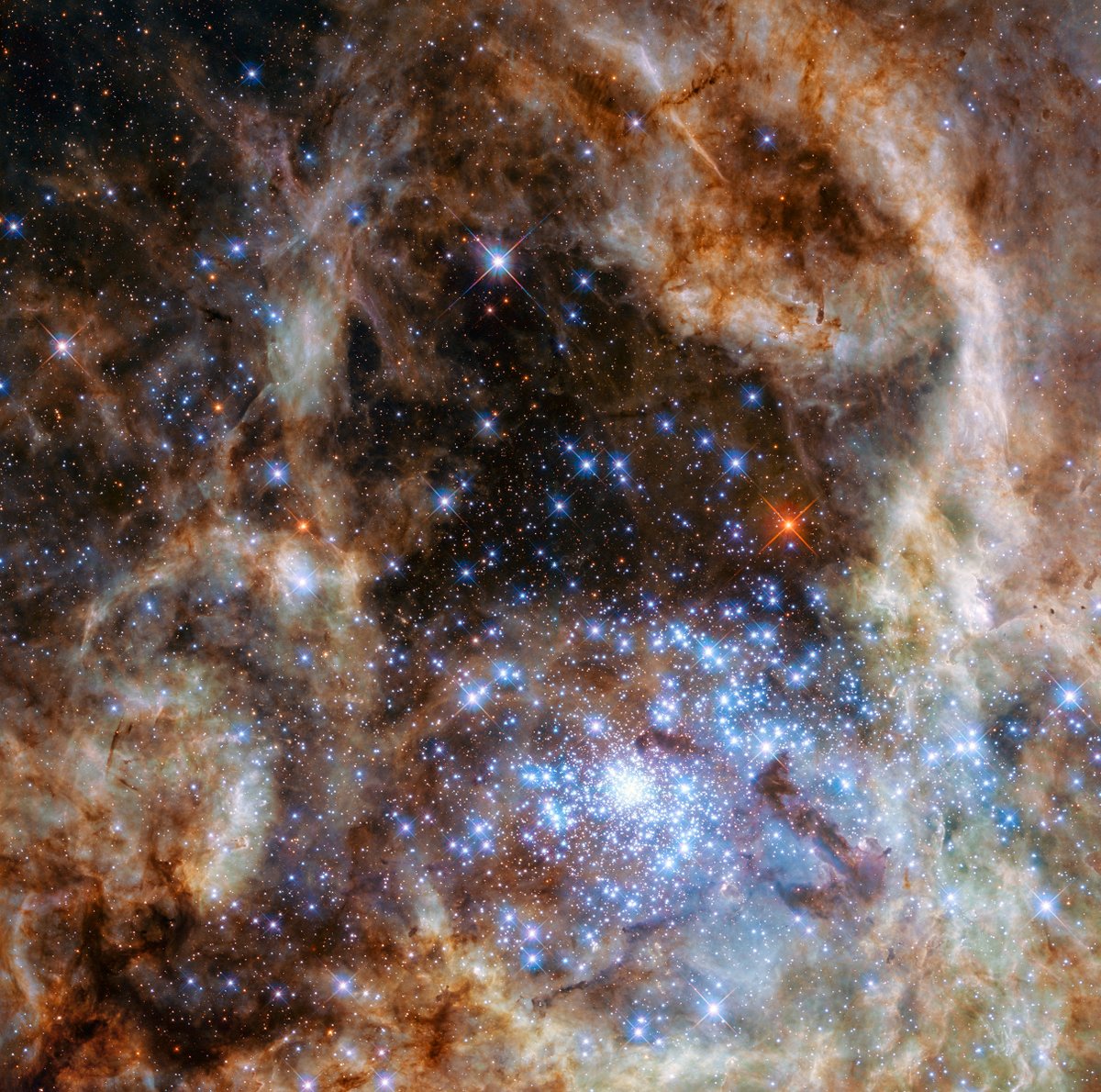
How did up to five stars create the Southern Ring Nebula? Let’s hit “rewind” and replay the interactions that might have created the scene! (1/9) 🧵 

Stars 1 and 2 are the only stars we see in the sixth and final panel above—and in #NASAWebb’s images. The remaining “guests” are stars 3, 4, and 5. They are all much less massive, or far smaller and dimmer, than stars 1 and 2. (2/9) 

We start with a wider field. Star 1, the most massive, is the fastest to age and responsible for creating the planetary nebula. Star 2 very slowly orbits star 1. All is relatively quiet. Star 5 orbits star 1 far more tightly. (3/9) 

Cue the action! We zoom IN on the scene—and two companions appear. Star 1 has begun to swell as it ages rapidly, swallowing star 3. Through gravity, star 3 starts to draw in material from star 1 and launches jets. Star 4 is close by, but not yet interacting. (4/9) 

Star 1 has expanded! Now, two companions enter the mix. Stars 3 and 4 have sent off a series of bipolar jets. As these two stars interact, the jets they sent out are tumbled, which leads to the irregular, wavy edges of the gas and dust. (5/9) 

We zoom OUT: A fast wind from the newly exposed ultra-hot core of star 1 is helping create a bubble-like cavity. A leftover disk of material is from the previous interactions with star 3. Star 5 has a wider orbit and is drawing “lines” through the ejected gas and dust. (6/9) 

As it orbits, star 5 continues to interact with the ejected gas and dust that slowly travels farther and farther from star 1 into the surrounding space, generating the system of large rings. (7/9) 

This illustration portrays the scene as we observe it today. We see only stars 1 and 2 in the Southern Ring Nebula—but Webb’s data is so detailed researchers can unwind this complex scene! Where stars 3, 4, and 5? They are small and dim to appear! (8/9) 

• • •
Missing some Tweet in this thread? You can try to
force a refresh

















